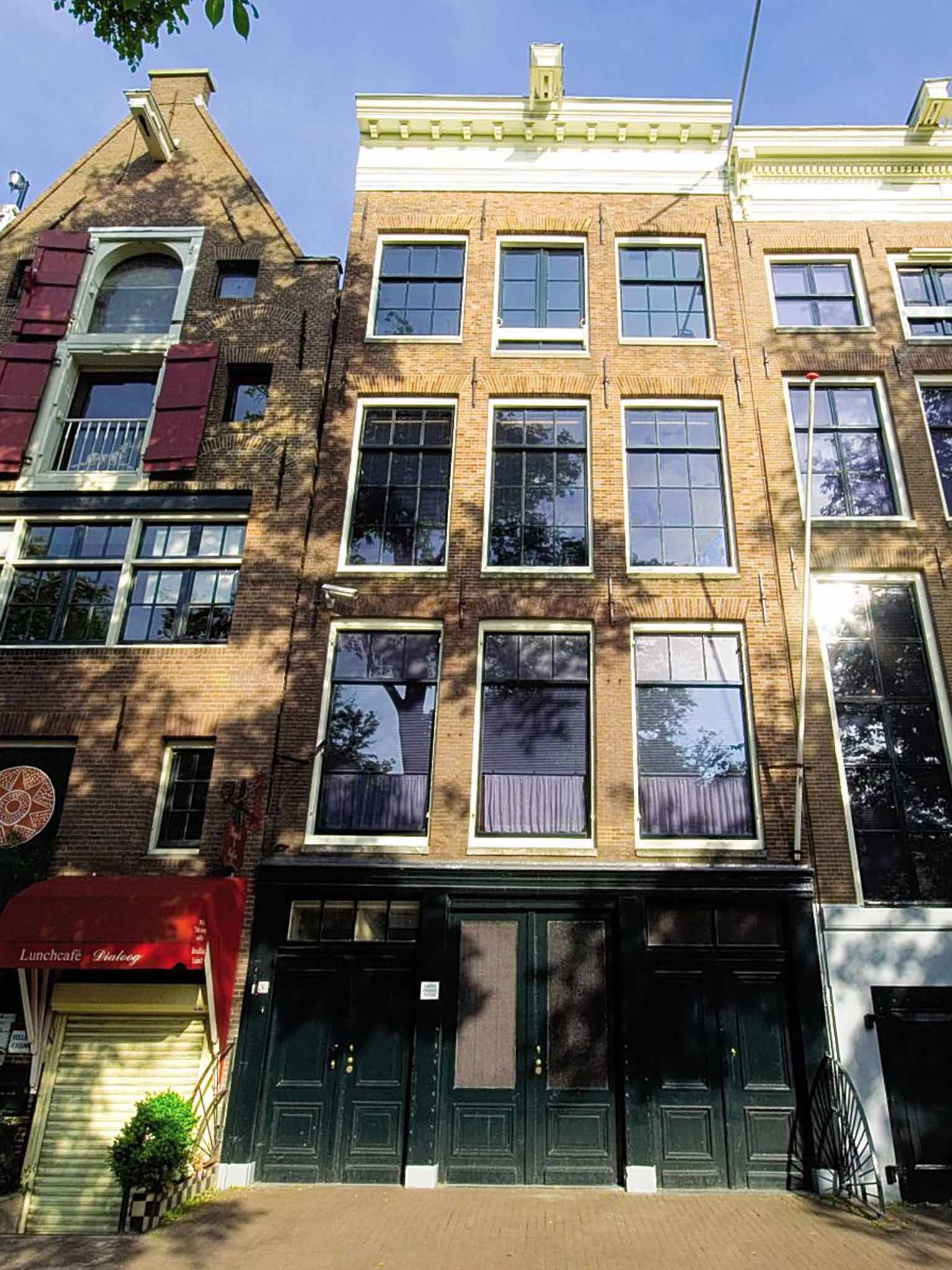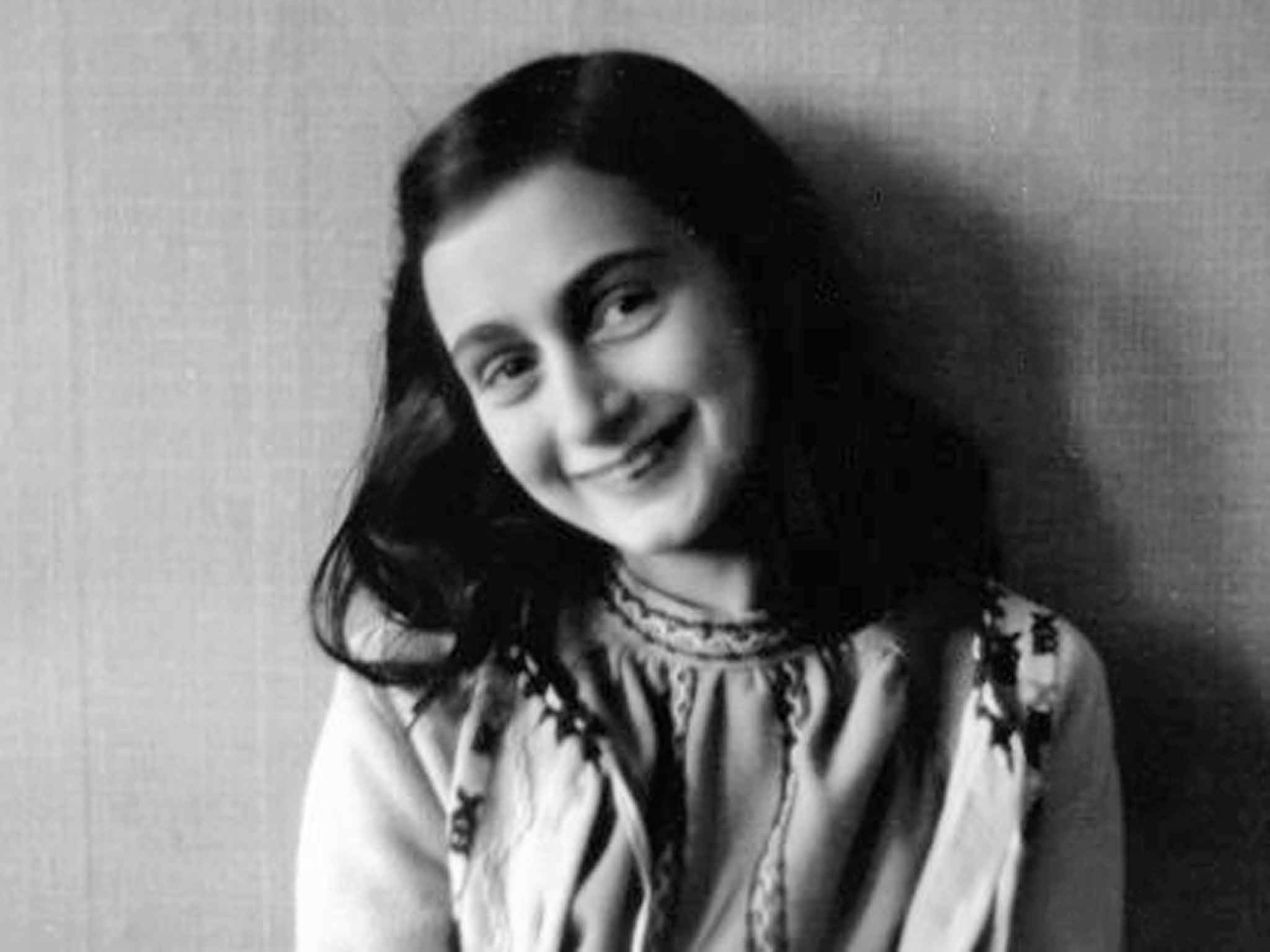The Independent's journalism is supported by our readers. When you purchase through links on our site, we may earn commission.
Anne Frank and Amsterdam: A dark date in the diary
Seventy years since Anne Frank's arrest, Chris Leadbeater visits the house that shielded her

Your support helps us to tell the story
From reproductive rights to climate change to Big Tech, The Independent is on the ground when the story is developing. Whether it's investigating the financials of Elon Musk's pro-Trump PAC or producing our latest documentary, 'The A Word', which shines a light on the American women fighting for reproductive rights, we know how important it is to parse out the facts from the messaging.
At such a critical moment in US history, we need reporters on the ground. Your donation allows us to keep sending journalists to speak to both sides of the story.
The Independent is trusted by Americans across the entire political spectrum. And unlike many other quality news outlets, we choose not to lock Americans out of our reporting and analysis with paywalls. We believe quality journalism should be available to everyone, paid for by those who can afford it.
Your support makes all the difference.It always seems strange to see a large crowd waiting outside a site of great sorrow. It is a hot summer's day in Amsterdam and the holiday-happy queue is snaking around the corner from the Prinsengracht canal, spilling into the adjacent Westermarkt square. Behind me, a family fidgets in the heat. Ahead, four teenagers are lost in their smartphones. But no one is bothered by the delay – and the time passes in a burble of laughter and conversation.
There is nothing vaguely inappropriate about this. And yet every group in the line ceases its chatter the second it crosses the threshold into 263 Prinsengracht. The Anne Frank House is a place that, without having to ask for it, sparks a respectful hush in its visitors.
The silence will be even more loaded two days from now. 4 August is the 70th anniversary of the arrest of the 15-year-old girl who has become the most recognisable victim of the Holocaust. German by birth, Jewish by faith, she was wrenched from this townhouse on the border of the Jordaan district in the Dutch capital – along with seven family members and friends with whom she had shared its achterhuis (annexe) for 25 months – on 4 August 1944.
This is not just a red-letter date in the tragic end to Anne Frank's life. It is the only one. The precise details of her death – in the Bergen-Belsen concentration camp in northern Germany, probably of typhus, probably in March 1945 – went unrecorded. And yet, in the symbol of persecution she has become, she is far more than one body in six million.

In many ways, the home where she hid from 6 July 1942 onwards needs no introduction. It was the headquarters of Opekta, her father's fruit-extract company. When, that July, two years after Germany had invaded the Netherlands, Anne's elder sister, Margot, received an order to relocate to a work camp, Otto Frank decided to conceal his family in the storage space above his firm's offices, knowing it was shielded from view by the surrounding buildings. They were joined by another family, the Van Pels – and Fritz Pfeffer, a dentist.
It is possible to grasp the crampedness that defined daily existence in these three ill-lit storeys – because Anne described it in the diary that would make her a posthumous icon. "The whole house is crawling with fleas and it's getting worse every day," she wrote on 3 August 1943, of an infestation caused by the Van Pels' cat. "It's making us all very jittery."
The achterhuis retains its sense of claustrophobia today, its compactness emphasised by the journey up narrow stairs to find it. I climb carefully, through the Opekta offices – recreated in their 1940s state, ledgers open, floorboards creaking – and then come to the landing where, as in 1944, a wide bookcase is propped at the entrance to the annexe. To move past it and into the gloom beyond feels momentous.
The squashed size of this area is immediately clear – the tiny bathroom, the kitchen buried in the corner of the "living" room. But it is Anne's bedroom which speaks loudest. There, as was Otto Frank's plan when he preserved the townhouse as a museum in 1960, is his youngest child's personality frozen behind glass, the walls adorned with torn-out magazine images of stars of the cinema – Greta Garbo, Ginger Rogers. They were a source of comfort when the family moved in. "Our little room looked very bare at first," Anne wrote on 11 July 1942. "But thanks to Daddy, who had brought my film-star collection ... I have transformed the walls into one gigantic picture. This makes it look much more cheerful."
They are also among the most harrowing relics of this horrific era. They are the Holocaust made personal. In this context – the mundane celebrity fascination of a teenage girl – Anne Frank is every female relation you ever cared about: your baby sister, your little cousin, your wife or girlfriend in her formative years, that faded mantelpiece photo of your mother in her youth. It is impossible to enter the room and not be deeply affected.
You leave via the house next door, the museum having long absorbed 265 Prinsengracht. Here, an exhibition (until April 2015) salutes the helpers, Otto Frank's employees, who kept the family from sight, including Miep Gies, who guarded Anne's diary after the arrests. Here too is a multimedia facility where multiple-choice questions – on ethical issues such as the new rise of the far right and whether a political party should ever be banned – appear on a screen. Visitors answer via keypads – and the wide-ranging results, flashed up instantly, show there are no easy answers. But the queue is still there when I step outside – proof that, 70 years on, many of us are still prepared to bear witness to 1944's heart of darkness.
Getting there
Several airlines fly to Amsterdam Schiphol from various UK airports, including British Airways (0844 493 0787; ba.com), KLM (020 7660 0293; klm.com), easyJet (0843 104 5000; easyjet.com), Flybe (0371 700 2000; flybe.com) and Jet2 (0800 408 1350; jet2.com).
Visiting there
The Anne Frank House, 263-267 Prinsengracht (00 31 20 556 7100; annefrank.org). Open daily 9am-10pm during August; €9.
More information
Join our commenting forum
Join thought-provoking conversations, follow other Independent readers and see their replies
Comments